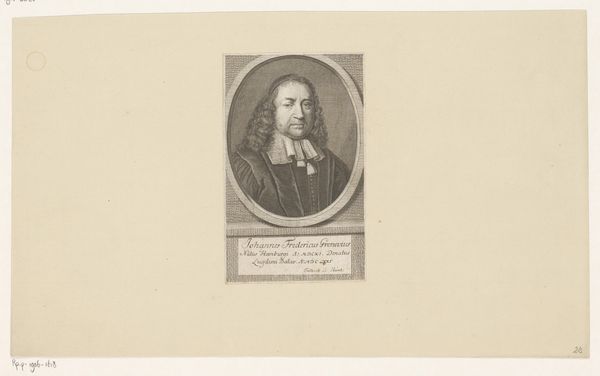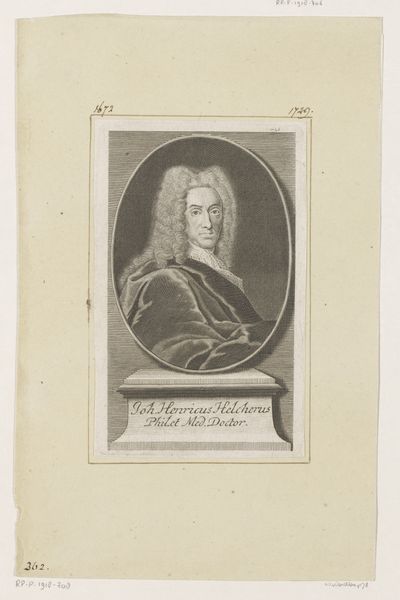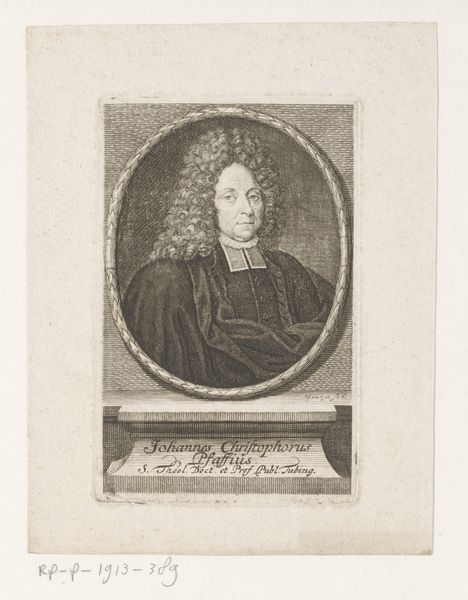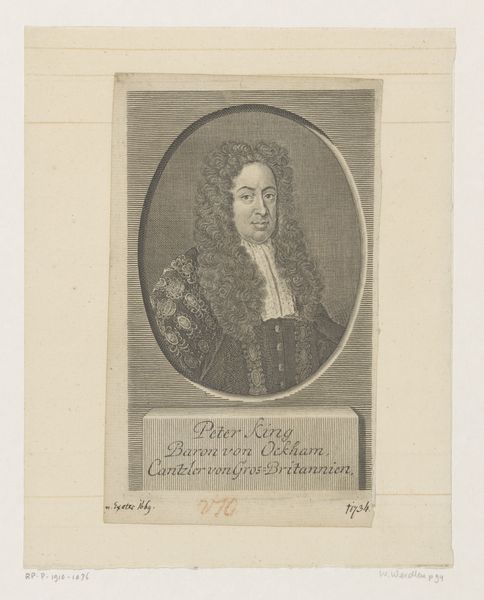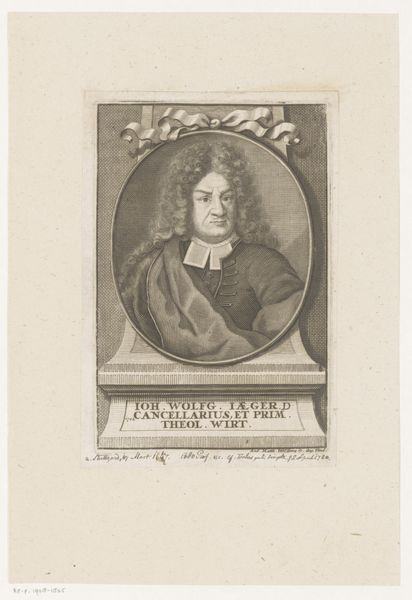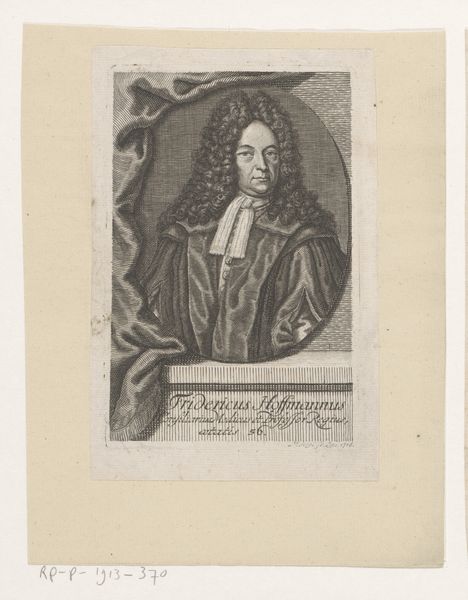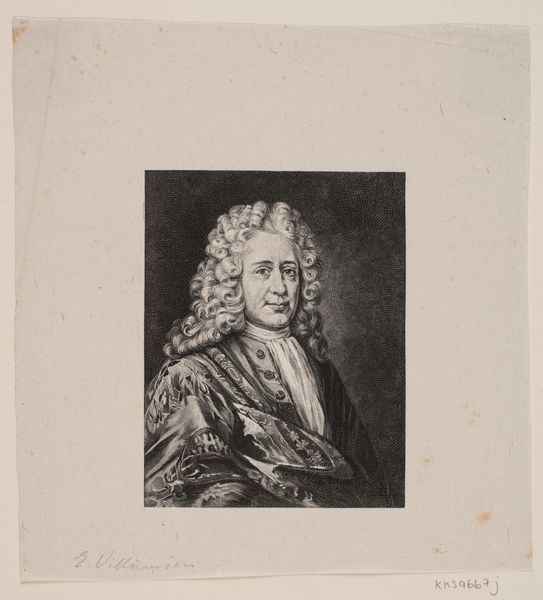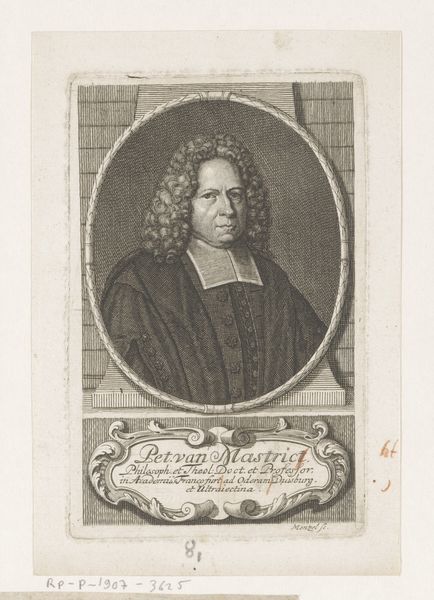
print, engraving
#
portrait
#
pencil drawn
#
baroque
# print
#
old engraving style
#
pencil drawing
#
history-painting
#
engraving
Dimensions: height 202 mm, width 157 mm
Copyright: Rijks Museum: Open Domain
Curator: Let's take a look at this piece, “Portret van Friedrich Weise,” made sometime between 1697 and 1709 by Johann Christoph Boecklin. It's an engraving. Editor: My immediate impression is the level of detail Boecklin achieves with engraving. The texture of the hair alone suggests a commitment to realistic representation, while the limited tonal range creates a somewhat somber mood. Curator: Exactly! Think about the societal context. Prints like these were essential for disseminating images of important figures, playing a crucial role in shaping public perception and memorializing individuals. Weise, as a theologian, occupied an important place in the community. Editor: And that replication of images has fascinating material implications. How does mass production influence perceptions of value, labor, and authenticity? Boecklin had to skillfully translate likeness and status into a reproducible medium, influencing who got remembered and how. It’s not just art, it is also work. Curator: True, it makes me wonder about the power dynamics at play. Who commissioned this portrait? Who was the intended audience? Prints were more accessible than painted portraits, meaning a broader section of society could potentially engage with Weise's image, reinforcing his authority. Editor: The engraver's skill becomes a means of social production and visibility. Also, what specific tools did Boecklin use, and from where did they originate? Was he using specialized papers that lent to particular kinds of impressions and how did this production affect the artist? It gives a very interesting context to consider when studying Boecklin's portrait. Curator: I see it connecting to our understanding of Baroque-era social structures. By examining the circulation of such prints, we gain a more complete understanding of the period’s cultural values and systems of power. Editor: Thinking about it, tracing the materials involved in its creation – the paper, the ink, the tools – illuminates the interconnected economies and labor practices that made this image possible. Curator: Thanks. I now have a fuller sense of this print's role in circulating both image and idea. Editor: And now I appreciate the intense physical labour and craftsmanship required to create it.
Comments
No comments
Be the first to comment and join the conversation on the ultimate creative platform.
